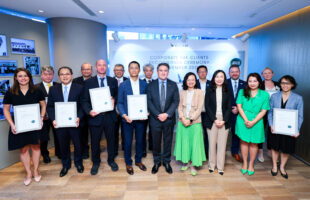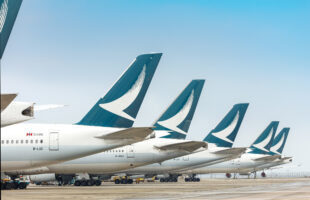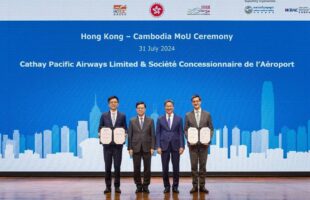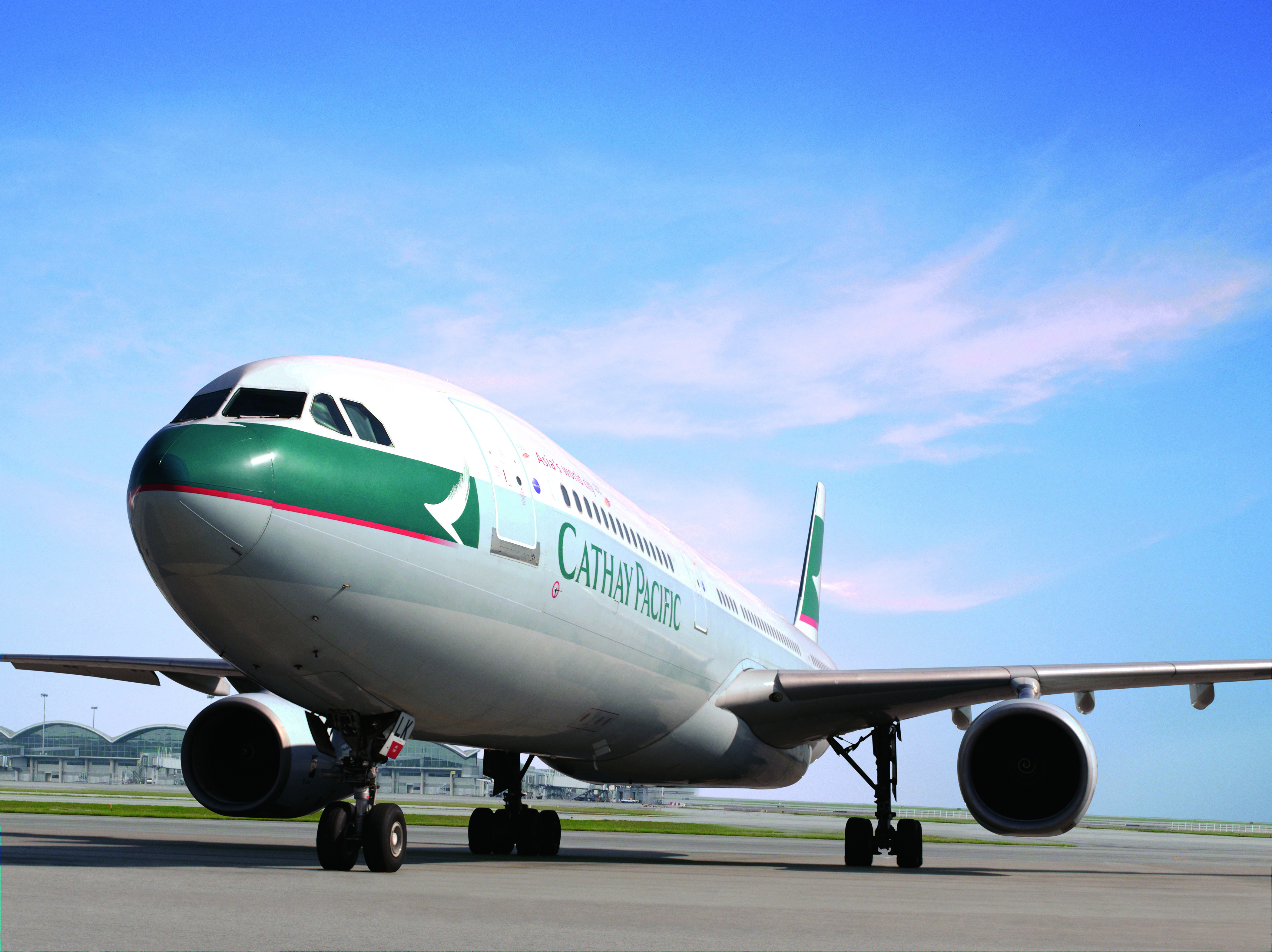
The Cathay Pacific Group has reported an attributable profit of HK$1,972 million (US$254.4 million) for the first six months of 2015. This is nearly a six-fold jump from the HK$347 million profit in the first half of 2014. Revenue for the period decreased by 0.9 per cent to HK$50,388 million.
The Group’s performance in the first six months of 2015 was considerably better than in the same period in 2014, Cathay noted citing higher load factors in the Group’s passenger business as a key reason. There was an improved contribution from subsidiary and associated companies and Air China’s profits were significantly higher, principally as a result of lower fuel prices.
The increase in demand in air cargo, which began in summer 2014, continued during the first few months of 2015, but slackened in the second quarter. The Group’s cargo revenue for the period was HK$11,376 million, a decrease of 2.5 per cent compared to the same period in 2014. Capacity for Cathay Pacific and Dragonair grew by 8.9 pr cent and the load factor increased by 0.9 percentage points to 64.1 per cent.
But Cathay said strong competition, overcapacity in the industry and a significant reduction in fuel surcharges put downward pressure on yield, which dropped by 11.1 per cent to HK$1.93. However there was strong demand on some of its principal cargo routes, notably to and from North America, assisted in part by maritime backlogs caused by industrial action at major shipping ports on the US West Coast. Intra-Asia shipments grew, but traffic to Europe fell short of expectations.
In the first half of 2015, despite an increase in passenger and cargo capacity of 6.4 and 8.9 per cent respectively, the Group’s fuel costs (before the effect of fuel hedging) decreased by HK$7,078 million (or 35.5 per cent) compared to the same period in 2014. Despite lower fuel prices, fuel remains the Group’s most significant cost. Fuel accounted for 34.2 per cent of total operating costs, a reduction of 3.7 percentage points compared to the same period in 2014. This was due to a 38.5 per cent decrease in the average into-plane fuel price, partially offset by a 4.9 per cent increase in consumption.
“Managing the risk associated with volatile fuel prices remains a priority,” Cathay said noting that in the first half of 2015, lower fuel costs were partially offset by hedging losses, resulting in its net fuel costs decreasing by HK$2,311 million (or 12.2 per cent). Its fuel hedging extends to 2019.
In the first six months of 2015, Cathay Pacific took delivery of seven new aircraft: Four B777-300ERs and three A330-300s. Four B747-400 passenger aircraft, one of which will be returned to its lessor by the end of 2015, were retired during the period, as were three A340-300 aircraft.
In 2013 it was agreed that six B747-400F freighters in the Cathay Pacific fleet would be sold back to The Boeing Company. Two of these freighters have been delivered, one in November 2014, the other in July 2015. The remaining four freighters will leave the fleet by the end of 2016. At 30 June 2015 the Group had 72 new aircraft on order for delivery up to 2024, with its first A350-900XWB aircraft scheduled to be delivered in February 2016.
In terms of its network, a new cargo service to Kolkata was introduced in March and frequencies on cargo services to North America and India were also increased. Cathay Pacific introduced passenger services to Zurich in March and Boston in May and will launch flights to Dusseldorf in September. It increased frequencies on its Jakarta service in January, on its Bangkok and Manila services in March and on its San Francisco service in June. It is increasing its flights to Bangkok and Osaka over the summer peak.
In June, Cathay Pacific reduced flights to Seoul in response to the incidence of middle east respiratory syndrome and the resulting drop in demand and service to Moscow was discontinued. Dragonair started to fly daily to Haneda in Tokyo in March and a service to Hiroshima in August and increased frequencies on its Phnom Penh and Wuhan services in January and Kolkata service in May. It is also increasing flights to Okinawa over the summer season.
Cathay Pacific chairman John Slosar said: “The operating environment was generally positive in the first half of 2015. Passenger and cargo demand was generally strong. We reduced our operating costs due to lower fuel prices, partially offset by fuel hedging losses. We continued to manage non-fuel costs effectively. But we face challenges.
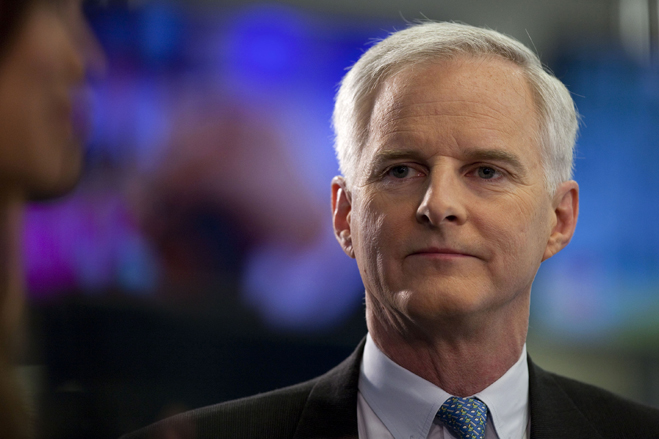
“Yield remained under pressure and there is increasing congestion at Hong Kong International Airport. We strongly support the construction of a third runway at the airport and believe that construction should start as soon as possible. We think the Airport Authority Hong Kong can, and should, finance the construction itself without burdening airport users unduly with additional charges. Airport charges must be competitive if Hong Kong’s aviation, tourism and related industries are to continue to grow.
“We usually perform better in the second half of the year than in the first. We expect our business to do well in the remainder of 2015 and we will continue to focus on providing high-quality products and services. We will continue to invest in aircraft, our products and the development of our network. Our financial position remains strong. Our commitment to our world-class team and to the aviation hub in our home city, Hong Kong, is unwavering.”



